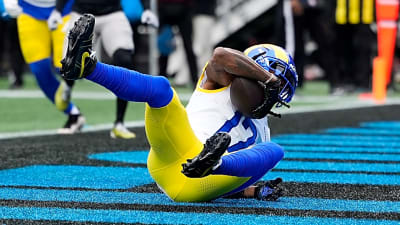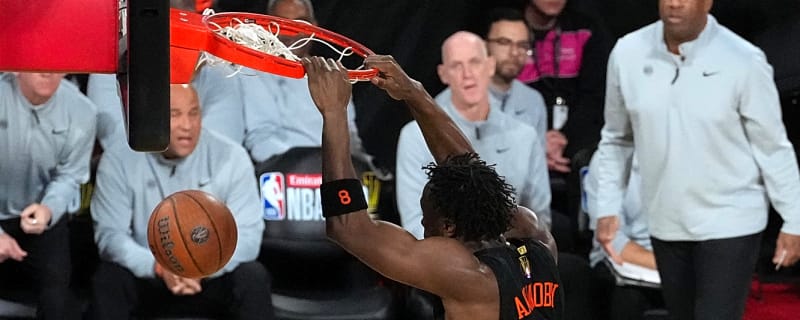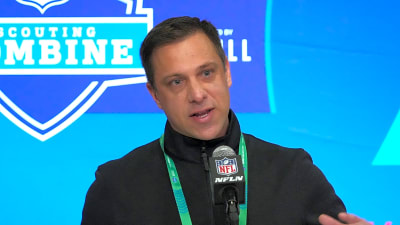- Home
- Quizzes
- My Quiz Activity
- Newsletters
- MY FAVORITES
- Add Sports/Teams
- SPORTS
-
NFL
- NFL Home
- Arizona Cardinals
- Atlanta Falcons
- Baltimore Ravens
- Buffalo Bills
- Carolina Panthers
- Chicago Bears
- Cincinnati Bengals
- Cleveland Browns
- Dallas Cowboys
- Denver Broncos
- Detroit Lions
- Green Bay Packers
- Houston Texans
- Indianapolis Colts
- Jacksonville Jaguars
- Kansas City Chiefs
- Las Vegas Raiders
- Los Angeles Chargers
- Los Angeles Rams
- Miami Dolphins
- Minnesota Vikings
- New England Patriots
- New Orleans Saints
- New York Jets
- New York Giants
- Philadelphia Eagles
- Pittsburgh Steelers
- San Francisco 49ers
- Seattle Seahawks
- Tampa Bay Buccaneers
- Tennessee Titans
- Washington Commanders
-
MLB
- MLB Home
- Athletics
- Arizona Diamondbacks
- Atlanta Braves
- Baltimore Orioles
- Boston Red Sox
- Chicago White Sox
- Chicago Cubs
- Cincinnati Reds
- Cleveland Guardians
- Colorado Rockies
- Detroit Tigers
- Houston Astros
- Kansas City Royals
- Los Angeles Angels
- Los Angeles Dodgers
- Miami Marlins
- Milwaukee Brewers
- Minnesota Twins
- New York Yankees
- New York Mets
- Philadelphia Phillies
- Pittsburgh Pirates
- San Diego Padres
- San Francisco Giants
- Seattle Mariners
- St. Louis Cardinals
- Tampa Bay Rays
- Texas Rangers
- Toronto Blue Jays
- Washington Nationals
-
NBA
- NBA Home
- Atlanta Hawks
- Boston Celtics
- Brooklyn Nets
- Charlotte Hornets
- Chicago Bulls
- Cleveland Cavaliers
- Dallas Mavericks
- Denver Nuggets
- Detroit Pistons
- Golden State Warriors
- Houston Rockets
- Indiana Pacers
- Los Angeles Clippers
- Los Angeles Lakers
- Memphis Grizzlies
- Miami Heat
- Milwaukee Bucks
- Minnesota Timberwolves
- New Orleans Pelicans
- New York Knicks
- Oklahoma City Thunder
- Orlando Magic
- Philadelphia 76ers
- Phoenix Suns
- Portland Trail Blazers
- Sacramento Kings
- San Antonio Spurs
- Toronto Raptors
- Utah Jazz
- Washington Wizards
-
NHL
- NHL Home
- Anaheim Ducks
- Boston Bruins
- Buffalo Sabres
- Calgary Flames
- Carolina Hurricanes
- Chicago Blackhawks
- Colorado Avalanche
- Columbus Blue Jackets
- Dallas Stars
- Detroit Red Wings
- Edmonton Oilers
- Florida Panthers
- Los Angeles Kings
- Minnesota Wild
- Montreal Canadiens
- Nashville Predators
- New Jersey Devils
- New York Islanders
- New York Rangers
- Ottawa Senators
- Philadelphia Flyers
- Pittsburgh Penguins
- San Jose Sharks
- Seattle Kraken
- St. Louis Blues
- Tampa Bay Lightning
- Toronto Maple Leafs
- Utah Mammoth
- Vancouver Canucks
- Vegas Golden Knights
- Washington Capitals
- Winnipeg Jets
- NCAAF
- NCAAM
- Olympics
- Boxing
- Entertainment
- Lifestyle
- Golf
- MMA
- Soccer
- Tennis
- Wrestling
- Sports Betting
- More Sports
- RESOURCES
- My Account
- YB on Facebook
- YB on Twitter
- YB on Flipboard
- Contact Us
- Privacy Policy
- Terms of Service
Pistons' J.B. Bickerstaff getting last laugh on his old team
After he brought the team back to respectability, the Cleveland Cavaliers fired their old coach J.B. Bickerstaff in 2024. Since then, he's turned the Detroit Pistons around.
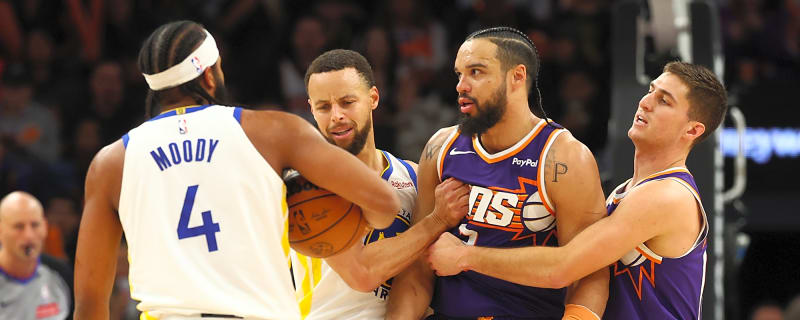
Suns escape Warriors despite more Dillon Brooks foolishness
Brooks making wildly undisciplined plays in consecutive games bodes poorly for his future and that of his team this season.

Clippers have made a decision about trading Kawhi Leonard, James Harden
The Los Angeles Clippers' season has been an absolute nightmare so far, leading to speculation that the franchise may look to reset.
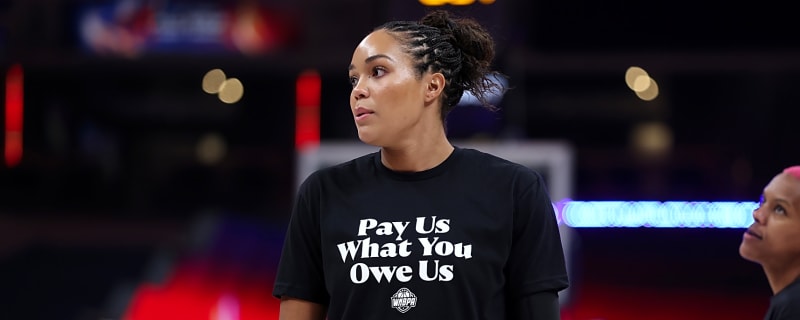
WNBA moves closer to labor strike following Players Association vote
The WNBA moved one step closer to its doomsday scenario on Thursday.
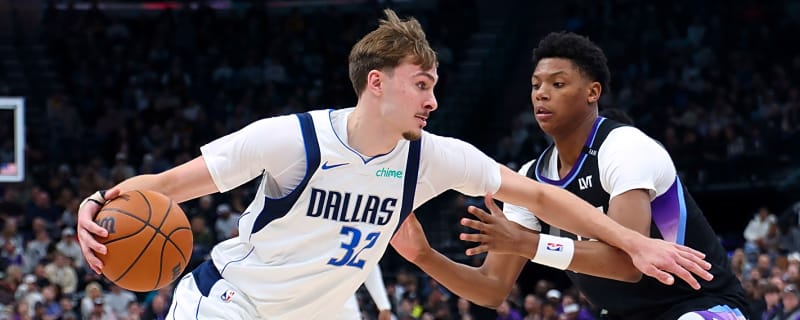
The 'Youngest 40-point NBA games' quiz
How many of the NBA players to score at least 40 points in a game before turning 21 years old can you name in six minutes?
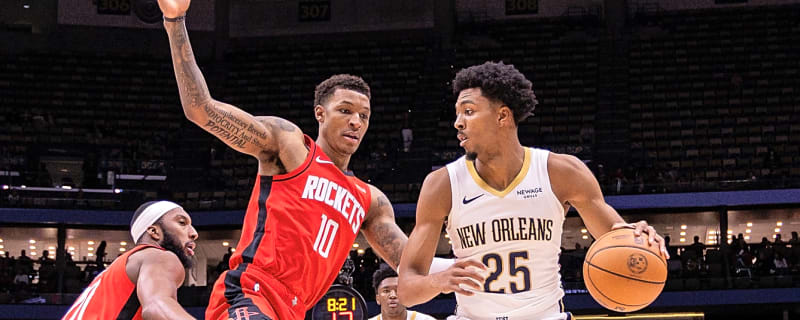
Rockets' second-half collapse to lowly Pelicans leads to third loss in four games
Houston led New Orleans by as many as 25 points in the second half.
Which NBA teams have the best Christmas Day records?
Christmas and the NBA go hand-in-hand. The day serves for the top hoops league in the world, like Thanksgiving for the NFL. However, while the Detroit Lions and Dallas Cowboys are perpetual Thanksgiving participants, the NBA has mixed up the matchups and the teams throughout the years.

Jalen Brunson sinks game-winner to complete Knicks' 15-point comeback
There is a reason that New York Knicks superstar point guard Jalen Brunson is considered "Mr. Fourth Quarter." And Brunson showed why on Thursday night.
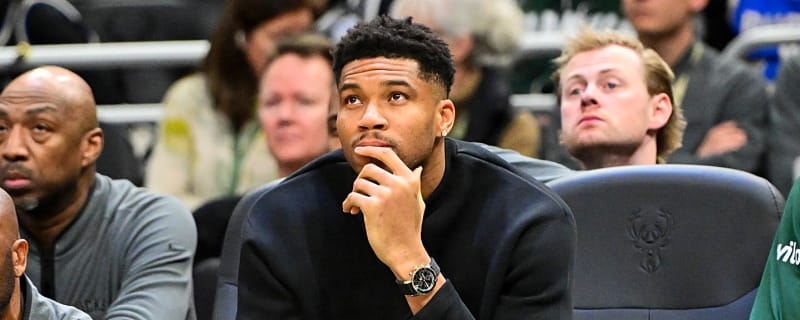
Giannis Antetokounmpo has clear message amid NBA trade rumors
If the Milwaukee Bucks do open the phones on a potential Giannis Antetokounmpo trade, there could be plenty of teams inquiring about the NBA superstar.
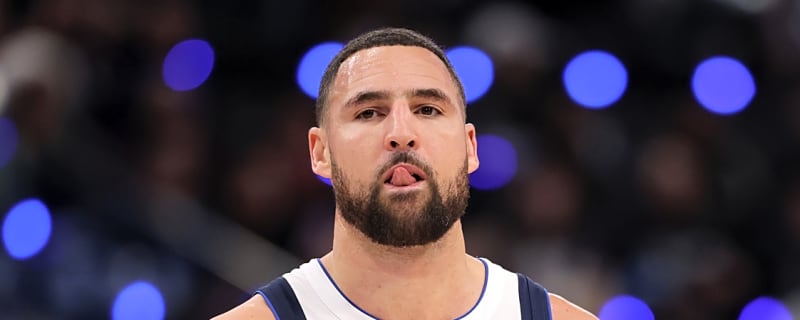
Warriors could bring back Klay Thompson with one Stephen Curry condition
The Golden State Warriors let Klay Thompson walk away last season. Could a return be in the cards?
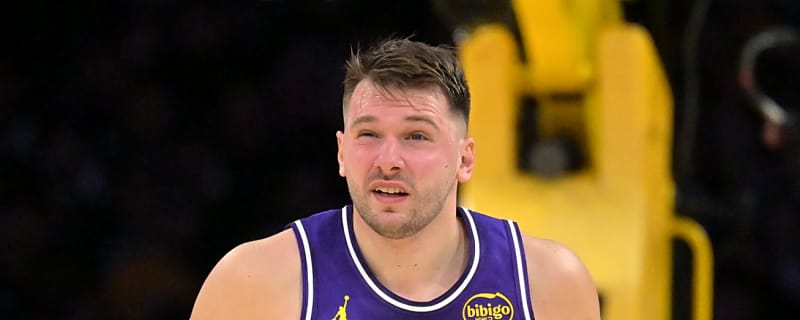
Is Luka Doncic's latest claim a sign of change or an empty promise?
Doncic acknowledged a shortcoming from him and the team, but will anything actually change?

Warriors' Draymond Green explains Steve Kerr's consistency issues
The Warriors are 13-14 and in eighth place in the Western Conference, and it seems like people never know what version of them they're going to get.
Puka Nacua's brother arrested for allegedly stealing Lakers rookie's car
Nacua's brother, Samson, has been arrested for allegedly stealing the car of Lakers rookie Adou Thiero.

Josh Giddey makes more Bulls history with triple-double in win
A unique theme of the season, a Chicago Bulls win meant Josh Giddey made franchise history on Wednesday night.

Steve Kerr responds to Warriors owner's criticism in leaked email
Golden State is going through a bit of an organizational crisis right now.
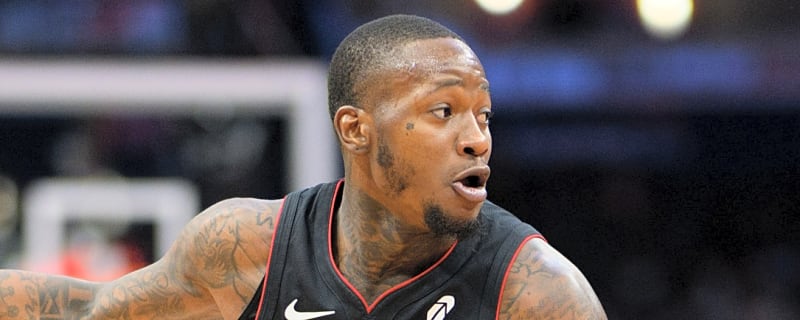
Adam Silver's response to Terry Rozier saga is a slap in Heat's face
The Heat have Rozier's $26.6 million salary counting against the salary cap, all while being unable to cut him or sign another player while he's on indefinite unpaid leave.

Ime Udoka fined $25K for comments about officiating
The NBA has fined Rockets head coach Ime Udoka $25K for his public criticism of the officiating.
Laurene Powell Jobs selling stake in Wizards' parent company
Billionaire executive Laurene Powell Jobs is selling her stake in Monumental Sports & Entertainment, the Wizards‘ parent company.
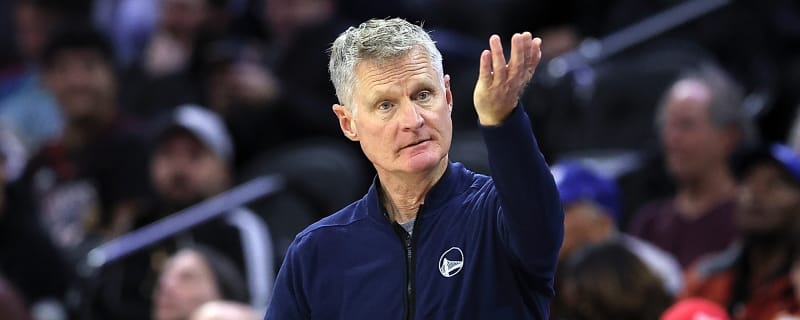
Warriors owner throwing Steve Kerr under the bus could be a sign that changes are imminent
Golden State Warriors players have raised questions about coach Steve Kerr's offense. Now, the team owner is piling on as well.

NBA Cup history suggests Spurs loss is positive omen
The San Antonio Spurs lost the NBA Cup final Tuesday night. But the limited history of the NBA Cup shows that defeat may lead to big things in the near future.
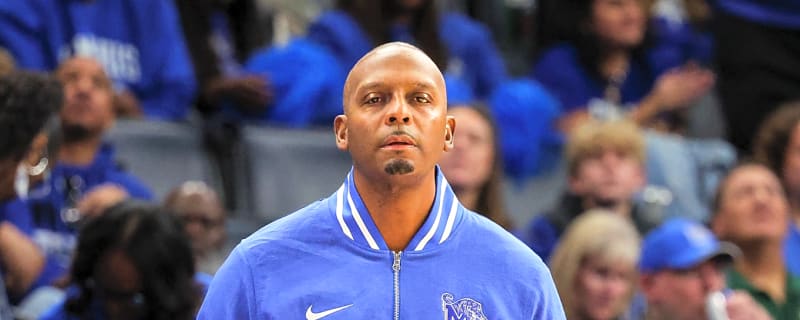
Penny Hardaway admits the NBA is 'not fun to watch anymore'
Excluding the millions of dollars, elite athleticism and height, Memphis head coach Penny Hardaway is just like us: irritated by the NBA’s current style of play.

Knicks make Madison Square Garden banner decision after NBA Cup win
The Knicks won this season's edition of the NBA Cup via a 124-113 come-from-behind victory over the San Antonio Spurs on Tuesday night.

Warriors' Steve Kerr indicates Jonathan Kuminga will rejoin rotation
Jonathan Kuminga is expected to rejoin the rotation.

Bucks to go 'big-game hunting' in attempt to appease Giannis Antetokounmpo?
A disappointing start to the season has raised questions about Antetokounmpo's future in Milwaukee.
The 'Active non-American NBA scoring leaders' quiz
Can you name the active players in the NBA that weren't born in the United States of America that have scored the most points in their career?
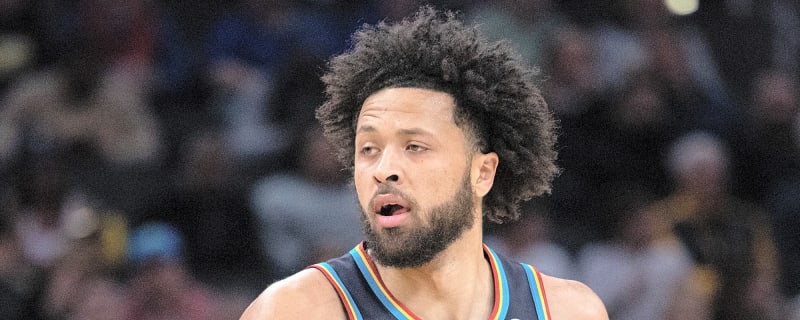
How did Pistons end up at top of Eastern Conference?
The Pistons have exceeded the expectations of just about everybody, and it appears that their remarkable 21-5 start is no fluke.
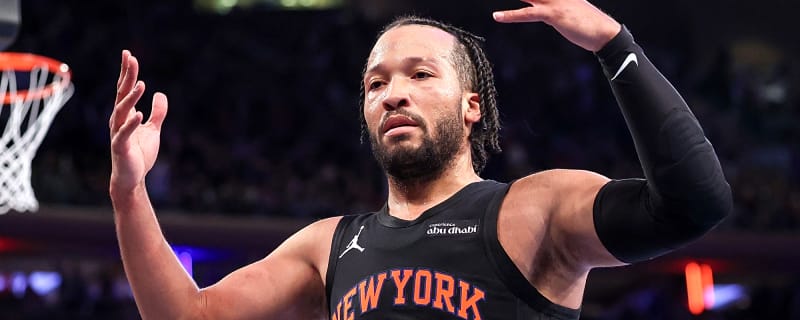
Knicks' Jalen Brunson singles out four teammates who made NBA Cup win possible
Each member of the Knicks will receive $530,933 in prize money for their win in the competition.
Breaking News
Trending News
My Favorites
Customize Your Newsletter
 +
+
Get the latest news and rumors, customized to your favorite sports and teams. Emailed daily. Always free!
PRIVACY POLICY EDITORIAL POLICY CONTACT US
ABOUT YARDBARKER TERMS OF SERVICE
Use of this website (including any and all parts and
components) constitutes your acceptance of these
Terms of Service and Privacy Policy.
This site is for entertainment purposes only.
There is no gambling offered on this site.
Gambling Problem? Call 1-800-Gambler.

 Free Newsletters
Free Newsletters

